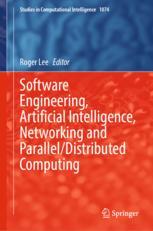

خرید و دانلود نسخه کامل کتاب Regulation of Cryptocurrencies and Blockchain Technologies National and International Perspectives Second Edition – Original PDF
64,500 تومان قیمت اصلی 64,500 تومان بود.37,500 تومانقیمت فعلی 37,500 تومان است.
تعداد فروش: 40
Author:
Rosario Girasa
CHAPTER 1 The Digital Transformation Introduction The advent of the internet and the technological advancements related thereto have inaugurated a transformation in how we think and act that exceeds any of the prior historical inventions and discoveries. We speak to each other instantaneously, spend endless quanta of time on cell phones, computers, and other devices, and have created totally new ways of communication with one another. Industries, often reluctantly, have undergone digital transformations and disruptions in an endeavor to modernize and not become bankrupt by failure to upgrade and innovate as the oft-cited lessons of Kodak and Polaroid have imparted.1 Digital transformation is occurring at an exponential pace without parallel in human history causing new innovations to rise rapidly fed by venture capital, crowdfunding, and other monetary investments. These enhance- ments are creating entirely new workforces but also are causing displace- ments of workers unable to adapt to the new technologies. Valuations of new enterprises above $1 billion literally are generated almost overnight which rival entire economies of many nations, e. g., Apple ($3 trillion), Google’s parent company Alphabet ($1927 trillion), Microsoft ($2513 trillion), and Amazon ($1728 trillion).2 Successful companies have or are adopting new business models to meet the technological revolution. IBM has transformed its mainframe business to technology and consulting business services; Microsoft from © The Author(s), under exclusive license to Springer Nature Switzerland AG 2023 R. Girasa, Regulation of Cryptocurrencies and Blockchain Technologies, Palgrave Studies in Financial Services Technology, https://doi.org/10.1007/978-3-031-21812-5_1 1 2 R. GIRASA PC (private copy) royalties to advertising and subscription-based models; and even LEGO restructured from its near bankruptcy to new digital businesses such as Lego Digital Designer (replaced in January 2022 by BrickLink Studio) and Lego Mindstorms.3 The “Big 4” accounting firms are experimenting with blockchain and artificial intelligence tech- nologies for auditing and related services, exemplified by Deloitte with its launch of Rubix, a blockchain that provides advisory services and builds distributed applications for clients worldwide.4 Legal services are entering the digital arena with firms such as Ross Intelligence that has leveraged and partnered with Vanderbilt Law and certain law firms to provide legal information from citations of cases to legal briefs.5 Other examples include uses of blockchain for a time-stamped, secured, and scal- able record to document when a trademark was first used; manage client transactions through a digital wallet; and render advice to clients in the financial sector on issues arising from the new technology.6 Banks are aware of the digital transformation which may make cash obsolete particularly as millennials become the mainstay of customers’ banking.7 The World Economic Forum noted that Chinese banks are leaders in digitalization in banking. It suggested that digital transforma- tion be accelerated internationally by sharing software solutions, applying technology across jurisdictions, incentivizing customers concerning their personal data rights, and safeguarding the interests of disadvantaged groups.8 The Federal Reserve Board (FED), has become acutely inter- ested in distributed digital ledger technology (DLT) as it applies to payments, clearing and settlement procedures, noting that its systems processes some 600 million transactions daily valued at over $12.6 trillion. DLT has the potential to create news ways of immutably and securely store information, offer identity management, provide for cross-border payments, and other essential uses.9 While recognizing the challenges of interoperability, ubiquity, and accessibility, nevertheless it is anticipated that the use of digital currency and DLT will deliver faster payment solu- tions and enhance the timeliness, cost effectiveness, and convenience of cross-border payments. The FED is further concerned about the role of Central Bank Digital Currencies and its competitiveness with non-bank related digital currencies.10 The latest innovation, generically, that seeks to replace historical modes of behavior is that of a new format for currencies. Although banks and other financial institutions have for decades sought to replace checks and 1 THE DIGITAL TRANSFORMATION 3 related financial instruments with the use of the then current technolo- gies, it appears that money itself will likely diminish in its current form to be replaced or added to by a virtual currency in a form known as “cryp- tocurrency”. In this study, we will discuss the nature of digital currencies, specifically, cryptocurrencies such as Bitcoin, and the latest emanations of stablecoins; non-fungible tokens; wrapped assets; the technology under- lying the currencies; and the regulatory enactments either proposed or already enacted by federal and state governing authorities. Definitions and Types of Non-Fiat Currencies Money Back to Basics: What Is Money? On this author’s office desk is a government issued One Hundred Tril- lion Dollars banknote disseminated by the Reserve Bank of Zimbabwe in 2008 that occurred during its period of hyperinflation from the late 1990s through 2011, emanating from government policies of seizures of private land and its participation in the Congo Wars. The sole value of the bank note is the cost to purchase them as souvenirs or as curiosities to illus- trate the government’s failings and the total lack of trust by possessors of such currency.11 Human beings have used money as a substitute for goods and services for thousands of years. Although one may barter, for example, one’s services such as plumbing, legal, or even medical services, in exchange for another person’s goods or services, among the difficul- ties are matching the needs of both parties and the valuations thereof. The commencement of substitutes led to a variety of means that was acceptable to a broader population whereby individuals could use them as desired rather than by barter that often was unacceptable or inconvenient. Early exchanges of primitive societies included the use of shells in African cultures, particularly cowrie shells around 1200 B.C., as well as salt, seeds, cattle, and other valued assets. Gradually, metal objects, especially gold bars, were used in Egypt and Mesopotamia about 3000 B.C., which were later transformed into metallic money. Other forms of metallic assets also came into existence including gold rings and other valuable metals. Metallic-like money appeared in China by 1000 B.C., bronze coins therein from the seventh- to the third century B.C., and even leather money was used in the second century B.C. Metallic coins were introduced in Ephesus, Turkey in the seventh century B.C. and used 4 R. GIRASA extensively in Greece and Rome soon thereafter.12 Barter has never totally been banished completely to history’s dustbin but has continued in some form, including among nations, to the present time. A form of barter used extensively in the twentieth century is counter- trade. At various times, countries or entities within nations have engaged in countertrade whereby large quantities of products or services have been exchanged without use of money, particularly when a nation’s currency has lost credibility. During World War II and thereafter, nations found countertrade to be beneficial due to the decimation of the industrial plants destroyed during the war. Companies and individuals in countries that had a trustworthy currency at times chose countertrade in order to avoid imposition of taxes on goods or services exchanged. Nations participated in countertrade also to offset trade imbalances and protect local indus- tries. Usually, such trade concerns sellers who desired to convey goods to a country that lacked or had severe limits on the use of hard currency such as some nations in sub-Sahara Africa and on the Indian continent. There are many types of countertrade, exemplified by barter (exchange of goods or services): counter purchase (party selling goods or services to another party agrees to buy back a specific product in exchange there- from in the future); compensation (part of payment is in hard currency); buyback (generally, a company may invest in constructions of a plant or other facility and agrees to purchase products manufactured from the said facility); clearing arrangement (exemplified by the trade between West and East Germany before unification whereby companies in both nations sold goods and services and registered the sales in clearing banks in the respective countries which were then settled at the end of a designated time frame and any balances became the obligation of the obligor country); switch trade (one party provides goods and/or services in exchange for an arrangement to purchase goods from the buying nation); and offsets (company may construct plants or provide other services in another country in order to diminish costs due and owing to the supplier).13 Money, in its many emanations, became a substitute for the exchange or barter of goods and services. It is based on the perception of persons using currency that it has equivalent value for such items. The Interna- tional Monetary Fund (IMF) defines “money” as anything that may act as a (a) store of value that persons in possession may keep and use it at a later time; (b) as a unit of account providing a common base for prices; or (c) as a medium of exchange that people use and exchange with one



نقد و بررسیها
هنوز بررسیای ثبت نشده است.